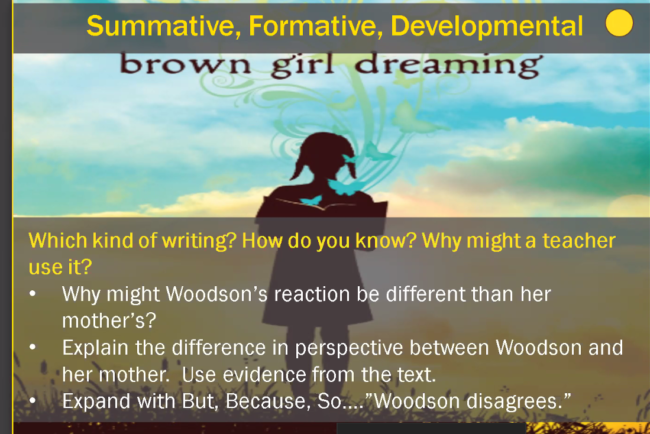08.13.20On Writing: A Balanced Healthy Diet
Just sat in on a few minutes on our own Emily Badillo and Jen Rugani training teachers to use our new reading curriculum.

They were discussing the three types of prompts we use and how and why we balance them, and shared this slide with examples from our unit on Brown Girl Dreaming.
The first prompt is formative. As the word “might” implies, you don’t have to know what you think before you start writing. There are, as Jen put it, “multiple entry points” to the question and the point is to lower the stakes, to let writing be a vehicle by which students learn to think.
The second prompt is summative. It does ask students to have an opinion and to explain and defend it with evidence.
The third prompt is developmental. It’s designed to give students practice developing syntactic tools that will help them answer the above kinds of prompts better–in this case the goal is to build students’ ability to use subordination more fluidly, but more broadly, the goal is to both capture and develop their thinking more because their writing is capable of more.
The point is that students need a balance of these. You end up writing a brilliant expression of your strongly held or insightful opinion in a summative prompt because you’ve wrestled at low stakes with lots of ideas in developmental prompts and because you’ve had lots of deliberate practice refining ideas in syntactic forms that expand your range.
Simple but critical. Not all writing is the same. Students need a healthy diet of all three.
